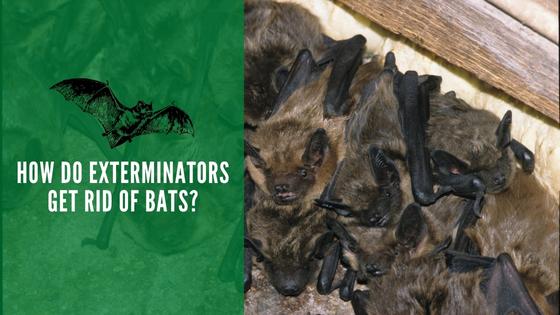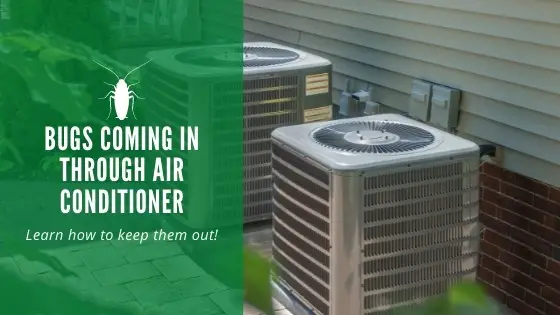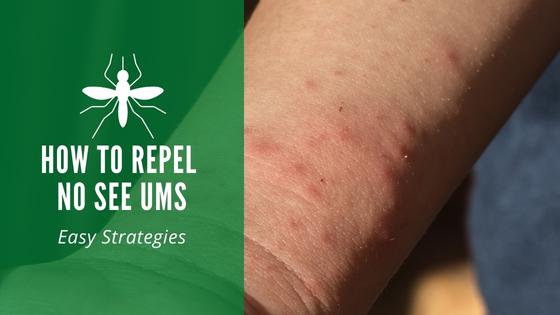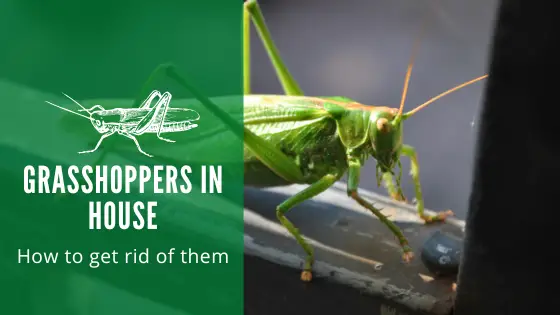How do Exterminators Get Rid of Bats

Many species of bats are listed as endangered or threatened, which is why federal and state regulations prohibit people from using chemicals to control their populations. If you aren’t allowed to hunt or kill bats, your first question might be how it is even possible to get rid of them when they invade your home or commercial building.
Fortunately, professional exterminators are often exempt from these regulations, and they know safe and humane ways to get bats away from buildings that humans inhabit.
Signs of Bats In Your Home
Bats often prefer to infest attics, which makes it hard to detect an infestation in the earliest stages. As the bat population on your property increases, you should start noticing several telltale signs.
Seeing Flying or Dead Bats
Bats are primarily nocturnal creatures, so your best time for sighting them is around dusk when they tend to leave attics and other hiding spaces for their nightly flights. If you miss your chance at night, then you might have the opportunity to see them returning to roost in the early hours of dawn.
Finding dead bats is also possible. Usually, you’ll find a dead bat somewhere along the exterior perimeter of your property. Or, you could find them during an inspection of a room that serves as their nesting place.
Discovering Bat Droppings
Bat droppings are known as guano, consisting of small, dark, elongated pellets that collect beneath the areas where the critters hang out. Over time, the droppings dry out and turn to dust, which can cause them to become airborne if they get disrupted.
The difference between bat and mouse droppings can be hard to determine, so you’ll likely need a professional pest technician to help you narrow down who’s behind the disgusting mess.
Finding Greasy Holes
Speaking of similarities between bats and rats, they leave grease marks around the holes they use as an entrance. Bats have a greasy, oily film that builds up on their coats. When they squeeze through a hole, it tends to rub off on the edges.
Smelling a Strong Ammonia Odor
You might not see the guano, but you might be able to smell a stench. Bat urine contains ammonia that can eventually seep into porous building materials.
Most people describe this scent as what you might detect from an unclean cat litter box. Depending upon the size of the population and how long they’ve been living in a building, the stench can be quite pervasive.
Dangers of Bats
Despite their evil depiction in horror movies, bats don’t typically want to harm humans. Unfortunately, they do have the ability to carry rabies along with other diseases like Histoplasmosis. Histoplasmosis is a lung infection that develops in humans after exposure to bat droppings that contain specific fungal spores.
If someone breathes in the spores, they may develop a fever, cough, and fatigue. For some people, the infection is mild. However, those with lowered immune systems can become seriously ill. This is why people are encouraged to avoid handling anything contaminated with guano.
The Best Time to Call a Bat Exterminator
With most pest infestations, it is best to start treatment right away. The same is true with bats, but you might also find that an exterminator responds with a heavy focus on the time of year.

During the fall and winter months, bats are in migration mode. This is the best time to address an infestation because they frequently fly in and out of buildings.
Between May and August, mating season occurs. During this time, eliminating an infestation gets harder since baby bats could be living in the space. Preventing these newborn bats from flying out of your building could cause them to die. Even worse, it could force them to find their way into other parts of your property to survive.
While your exterminator can still begin eradicating the population, they’ll be extra cautious during this time to prevent breaking any laws or causing the infestation to spread.
How Do Exterminators Get Rid of Bats?
Exterminators tend to appreciate bats for their ability to help control insect populations. But your friendly neighborhood exterminator also knows that humans don’t want to deal with the health risks that bats pose on their property.
The majority of techniques that exterminators use to control bats are based upon taking a humane approach to handling the problem.
Know When to Use Funneling Strategies
Bat funnels operate by letting the flying creatures out of their nesting space without causing them harm. Once the bat flies out, the smaller exit end of the funnel collapses, which stops the bat from being able to get back inside.
While this encourages bats to make another space for their home, it does come with the risk of leaving babies without their mother. An exterminator will typically inspect the area to ensure there aren’t baby bats nesting before installing a funnel. Sometimes, you might need to wait for the babies to develop before they use this method.
Keep Bats Out With Exclusion Techniques
After funneling, exterminators move on to sealing any entry points that the bats used. This might be accomplished by adding a screen to a small hole. Or, you may need to arrange major repairs to the roof or other parts of your house. Caulk is an option for filling in smaller cracks that bats might use to return to the building.
Entice Them to Move to a Bat House

Bats are often associated with being evil, but they serve the important purpose of controlling insect populations. This is why an exterminator might recommend giving them a suitable place to live further out on your property lines.
Bat houses are built on tall poles that attract bats that fly around the area. While you’ll want to ensure these are placed far enough away from your house to keep the overflow from coming inside, these houses are a great compromise for allowing the bats to live without being a nuisance.
Control Nearby Mosquito Populations
Like other predators, bats prefer living in areas where they can find plenty of prey. While bats eat lots of other small insects, they love to eat mosquitoes. Eliminating mosquito breeding areas from your property can help to encourage the bats to fly elsewhere to set up their roosts.
If you’ve noticed an increase in mosquitoes on your property, then look for standing water that you can dry up. You can also treat ponds and other water features with special larvicides that prevent new mosquitoes from developing.
After you’ve removed the bats, make sure to arrange for professional assistance with cleaning up any leftover droppings. The contaminated materials could harbor dangerous viruses or fungi that could make you sick.
As a final note, continue to monitor for bat activity in the future. While they shouldn’t come back, addressing the issue at the first sign of a bat moving in can prevent you from having to wait through the mating season to get rid of the problem.



